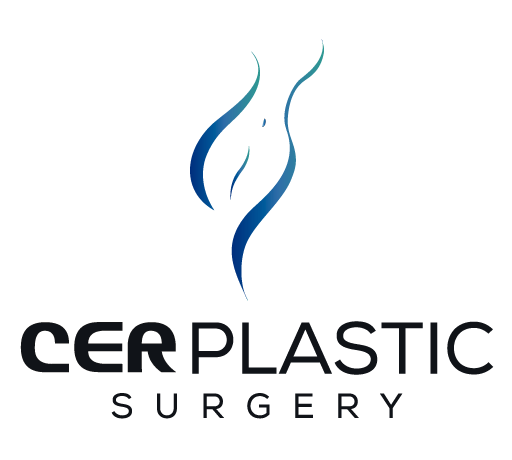Chin Augmentation
Chin augmentation is a cosmetic surgical procedure aimed at enhancing the appearance and balance of the chin. It involves reshaping the chin through the use of implants or by modifying the bone structure.
Chin augmentation achieves aesthetic goals, such as increasing chin projection, improving facial harmony or solving congenital chin deficiencies. The specific approach and materials used in chin augmentation can vary based on the patient’s unique needs and the surgeon’s recommendations.
The Chin Augmentation Procedure
Chin augmentation is typically performed as an outpatient surgical procedure under general anesthesia or local anesthesia with sedation. The specific technique used will depend on your individual goals and the surgeon’s recommendations. Here is an overview of the steps involved in a typical chin augmentation procedure:
- Consultation: The process begins with a consultation with a board-certified plastic surgeon. During this consultation, you will discuss your goals, medical history, and any concerns you may have about the procedure. Your surgeon will also evaluate your facial features to determine the most suitable approach.
- Anesthesia: On the day of surgery, anesthesia will be administered to ensure your comfort during the procedure. Your surgeon will discuss the anesthesia options with you beforehand.
- Incision: The surgeon will make an incision either inside your mouth (intraoral) or beneath your chin (submental). The choice of incision location is determined by factors such as your anatomy and the type of implant being used.
- Implant Placement: In most cases, surgeons use silicone to augment the chin, positioning and securing the implant carefully over the chin bone.
- Incision Closure: Surgeons close the incision with sutures and remove any excess tissue or skin if necessary.
- Recovery: After the procedure, the medical team will monitor you in a recovery area until you wake up and stabilize. You may experience some swelling, bruising, and discomfort, which are normal after surgery.
Types of Chin Implants
There are various types of chin implants available, each designed to achieve specific results. Your surgeon will help you choose the most suitable implant type based on your goals and facial anatomy. Here are some common types of chin implants:
- Silicone Implants: Soft, solid silicone material makes these come in various shapes and sizes. Silicone implants are popular for their natural feel.
- Biocompatible Implants: Materials naturally compatible with the body make these implants, reducing the risk of allergic reactions or complications.
- Injectable Fillers: Some individuals may opt for non-surgical chin augmentation using injectable fillers. This provides a temporary enhancement that doesn’t require surgery.
Recovery and Aftercare chin augmentation
Recovery after surgery varies from person to person but generally follows a predictable timeline. Here are some key points about the recovery process:
- Swelling and Bruising: Swelling and bruising are common after surgery and typically subside over the course of a few weeks.
- Discomfort: You may manage some discomfort with prescribed pain medications.
- Rest and Activity: Rest is essential during the initial days of recovery. You can alleviate discomfort by taking prescribed pain medications.
- Dietary Considerations: At the beginning, it is essential to follow a soft diet to avoid putting excessive pressure on the chin.
- Scarring: Incision scars are usually well-hidden, especially with intraoral incisions. Over time, scars tend to fade and become less noticeable.
- Final Results: It may take several months for the swelling to fully subside and for you to see the final results of your chin augmentation.

Choosing a Surgeon
Selecting a qualified and experienced plastic surgeon is essential to achieving the best possible results with chin augmentation. When choosing a surgeon, consider the following:
- Board Certification: Ensure a board certification in plastic surgery from your surgeon.
- Experience: Ask about the surgeon’s experience with chin augmentation procedures and request to see before-and-after photos of previous patients.
- Personalized Consultation: A thorough consultation where the surgeon listens to your goals and addresses your concerns is a good indicator of their commitment to patient care.
- Facility: The surgical facility should meet safety and accreditation standards.
- Reviews and Recommendations: Reading reviews and seeking recommendations from previous patients can provide valuable insights into the surgeon’s reputation.
Conclusion
Chin augmentation is a safe and effective way to enhance your facial profile, boost your confidence, and achieve a more harmonious appearance. Whether you’re looking to correct a receding chin, improve facial balance, or enhance your overall facial aesthetics, chin augmentation can help you achieve your goals.
If you’re considering chin augmentation, start by scheduling a consultation with a board-certified plastic surgeon who can assess your needs and guide you through the process. With the right surgeon and a clear understanding of the procedure, you can look forward to a more confident and aesthetically pleasing you.
RELATED POST:
START A VIRTUAL CONSULTATION
A virtual consultation is when you send us photos of the places of your body where you’d like to improve. Then our surgeon analyzes it to confirm that you are a candidate for that particular procedure. We later inform you about our doctor’s decision and give you a quote with all the information about your surgery. Please, do be at ease that everything is confidential between yourself, the doctor, and the doctor’s representative.




